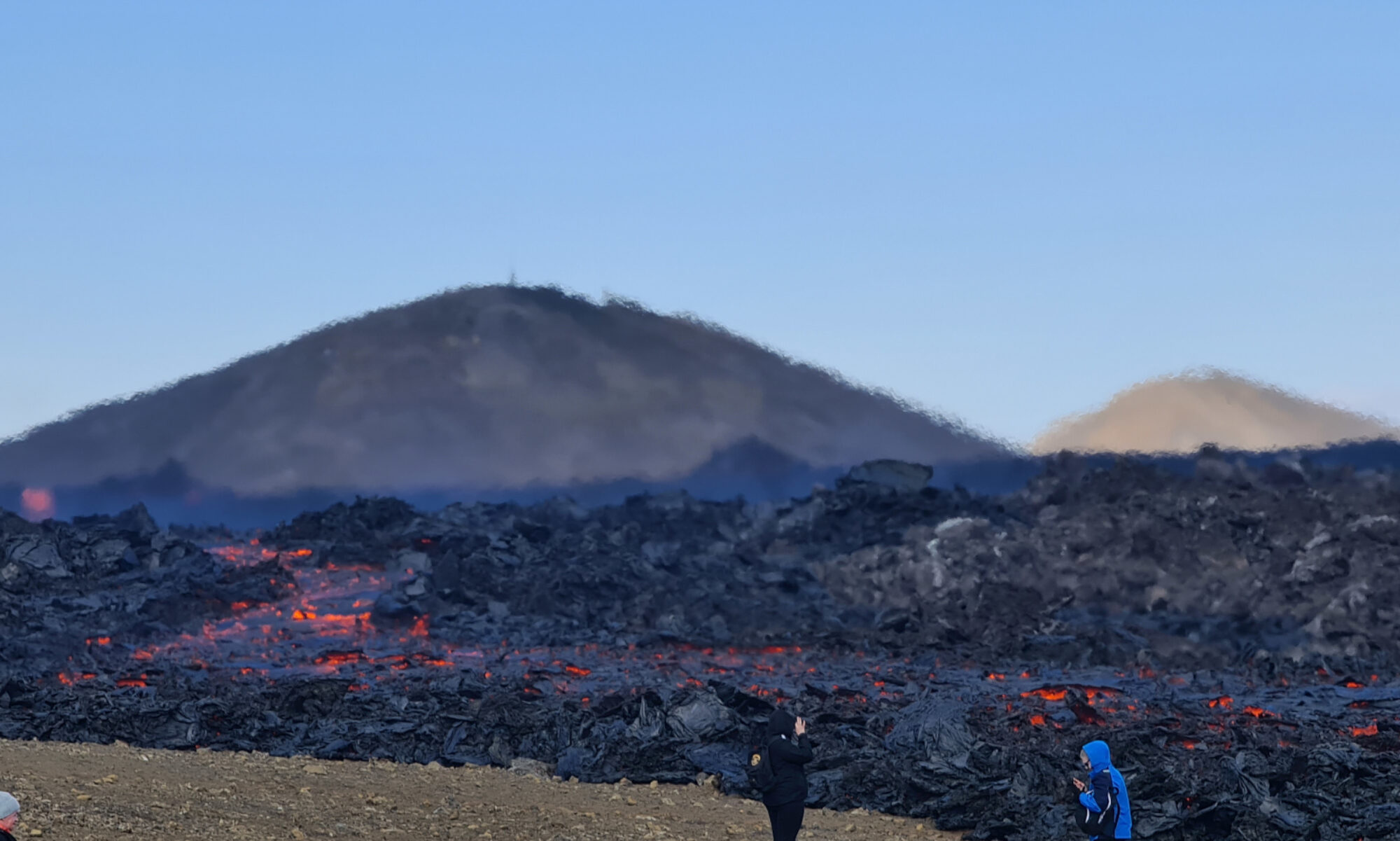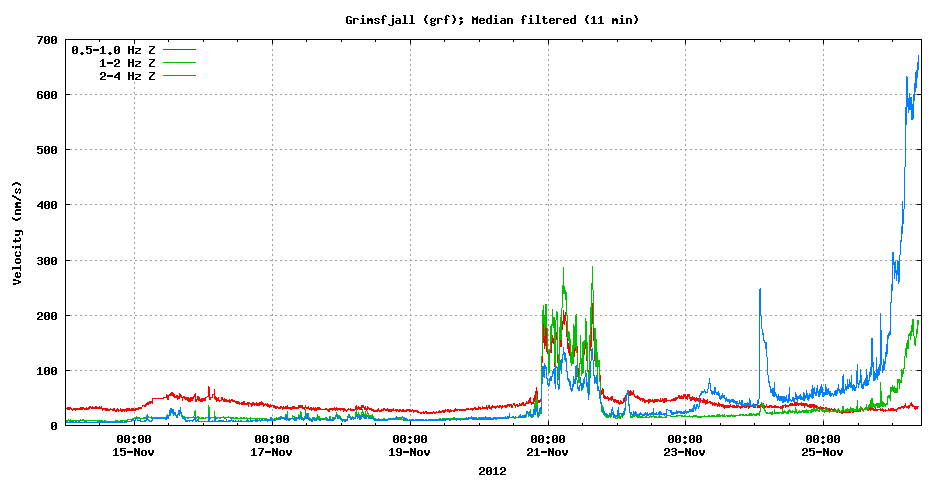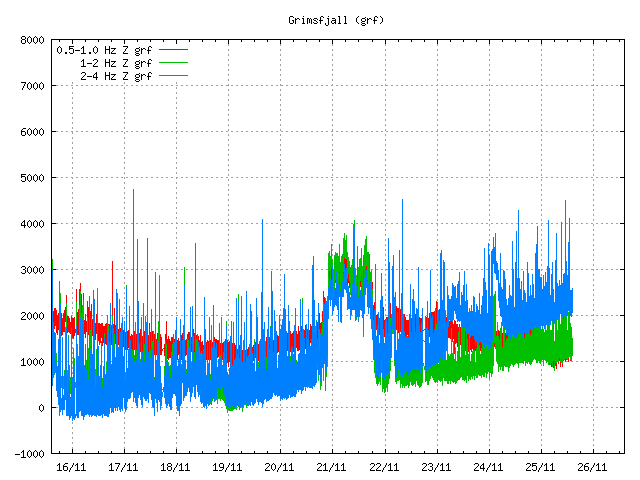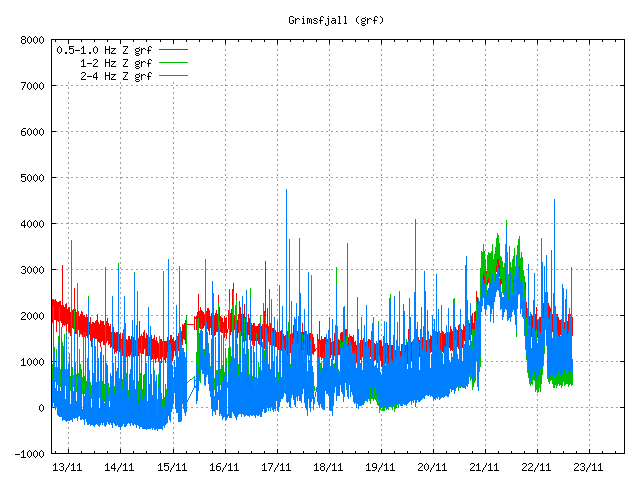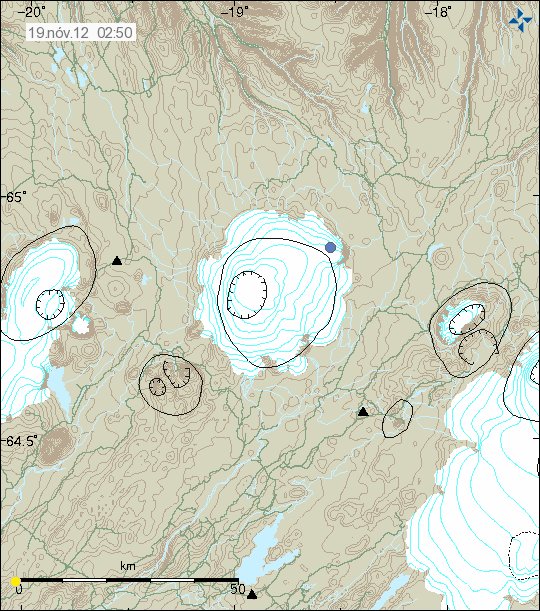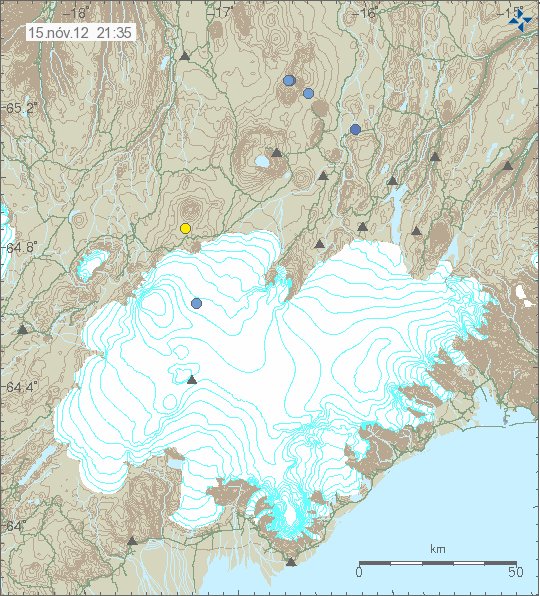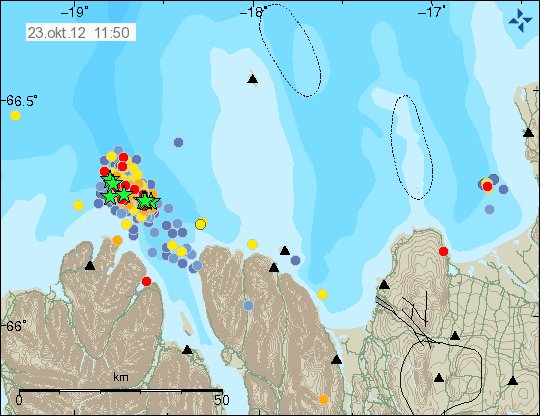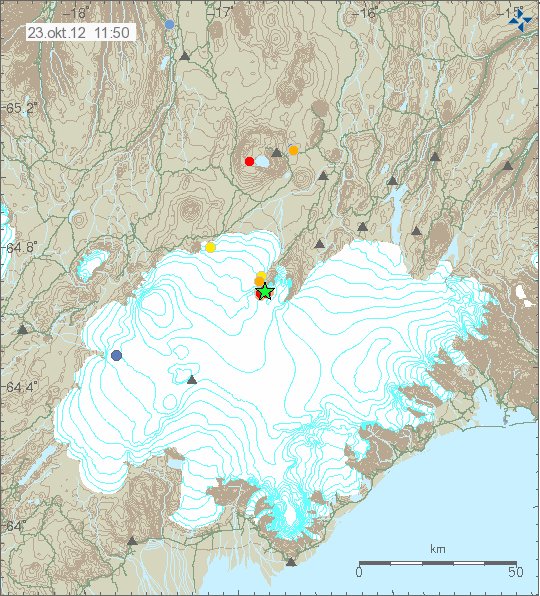During the night. Harmonic tremor levels started to drop in Grímsfjall volcano. The reason for this harmonic tremor level increase remain unknown and unclear. But no volcano related activity has been seen or recorded so far in Grímsfjall volcano.
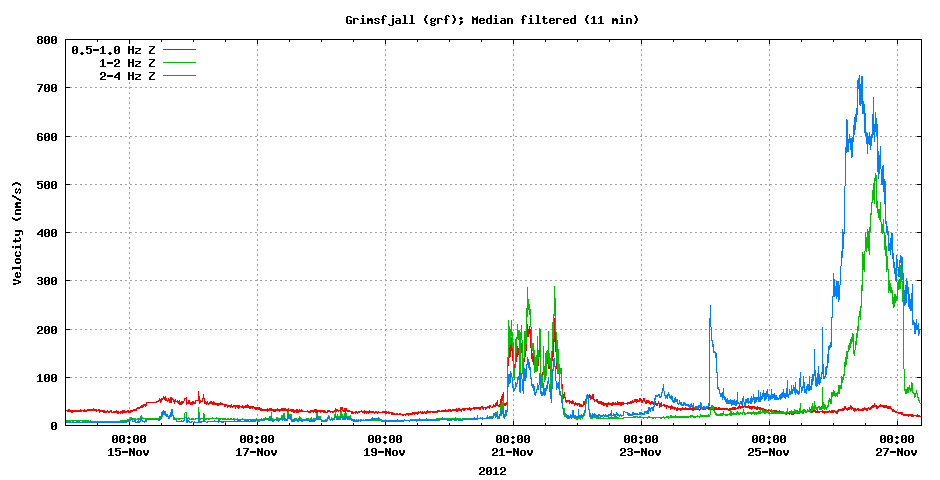
Harmonic tremor levels in Grímsfjall volcano. This is high resolution image. Copyright of this image belongs to Icelandic Meteorological Office.

Harmonic tremor levels in Grímsfjall volcano. This is low resolution image. Copyright of this image belongs to Icelandic Meteorological Office.
Some earthquake activity has been taking place following this events. But the earthquakes have been small and do not suggest anything is about to take place in Grímsfjall volcano.
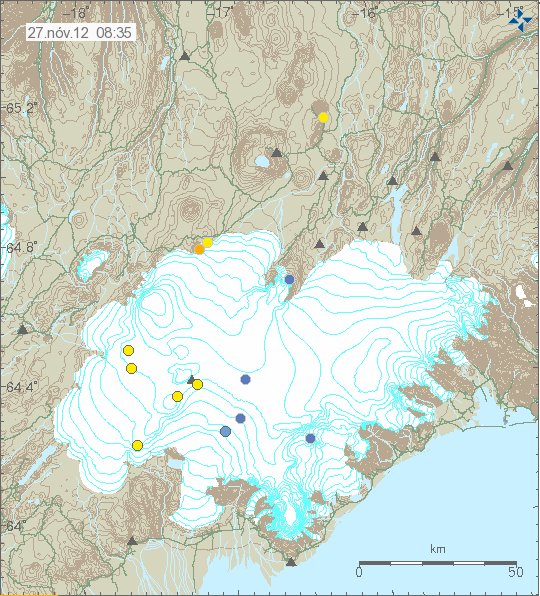
Earthquake activity in Grímsfjall volcano for the past 48 hours. Copyright of this image belongs to Icelandic Meteorological Office.
So far Grímsfjall volcano has remained quiet during this glacier flood. With nothing suggesting that it is going to change soon. As for the glacier flood it self. According to latest news it seems to have peaked and is now dropping. But this was a small glacier flood. With just rise about 153 cm. But that is quite small compared to many older glacier floods from Grímsfjall volcano.
Icelandic News about this glacier flood
Hlaupið í Grímsvötnum virðist hafa náð hámarki (Vísir.is)
Hlaupið í Gígjukvísl í rénun (Rúv.is)
Blog post updated at 12:48 UTC on 27.11.2012
